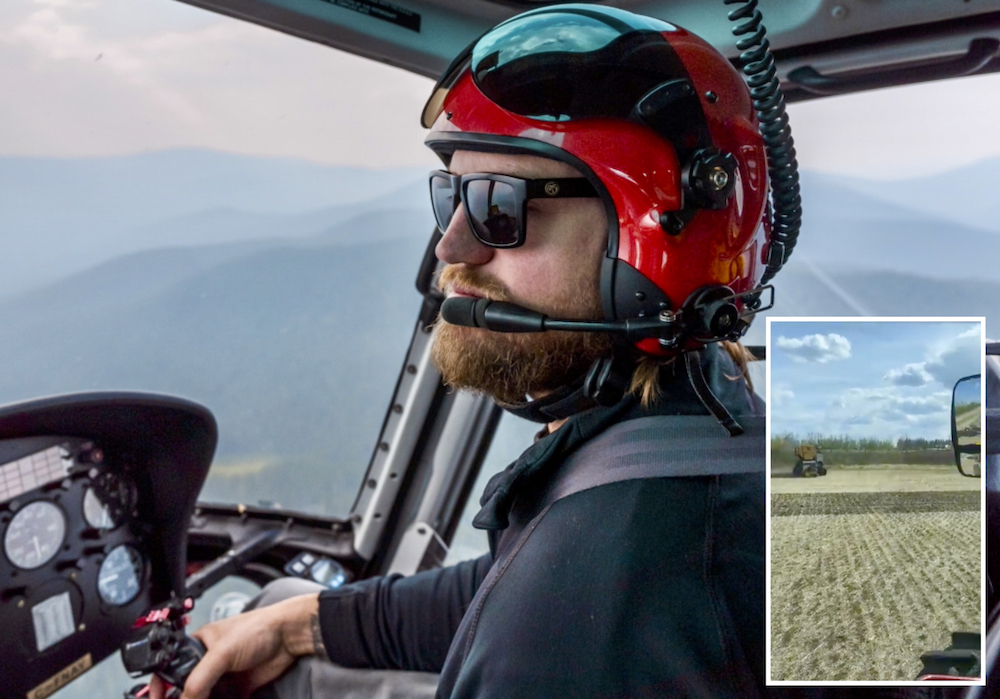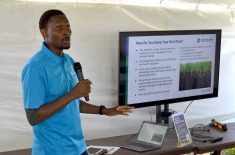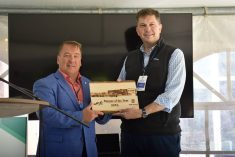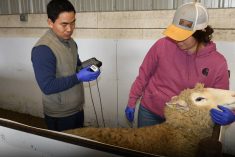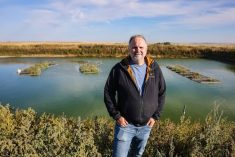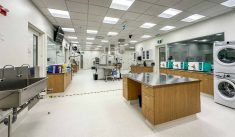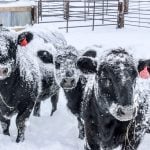A high-flying young Alberta farmer has taken a significant step into the future of agriculture by using a robot to sow part of his canola crop.
Wade McAllister used an OMNiPOWER autonomous platform to seed a small part of his family’s 3,500-acre farm near Innisfail this spring — although he was present at the same time, seeding with a conventional rig.
“This is the first time ever that an autonomous drill and a conventional drill have worked together in the same field sharing the same field map,” said the 34-year-old.
Read Also
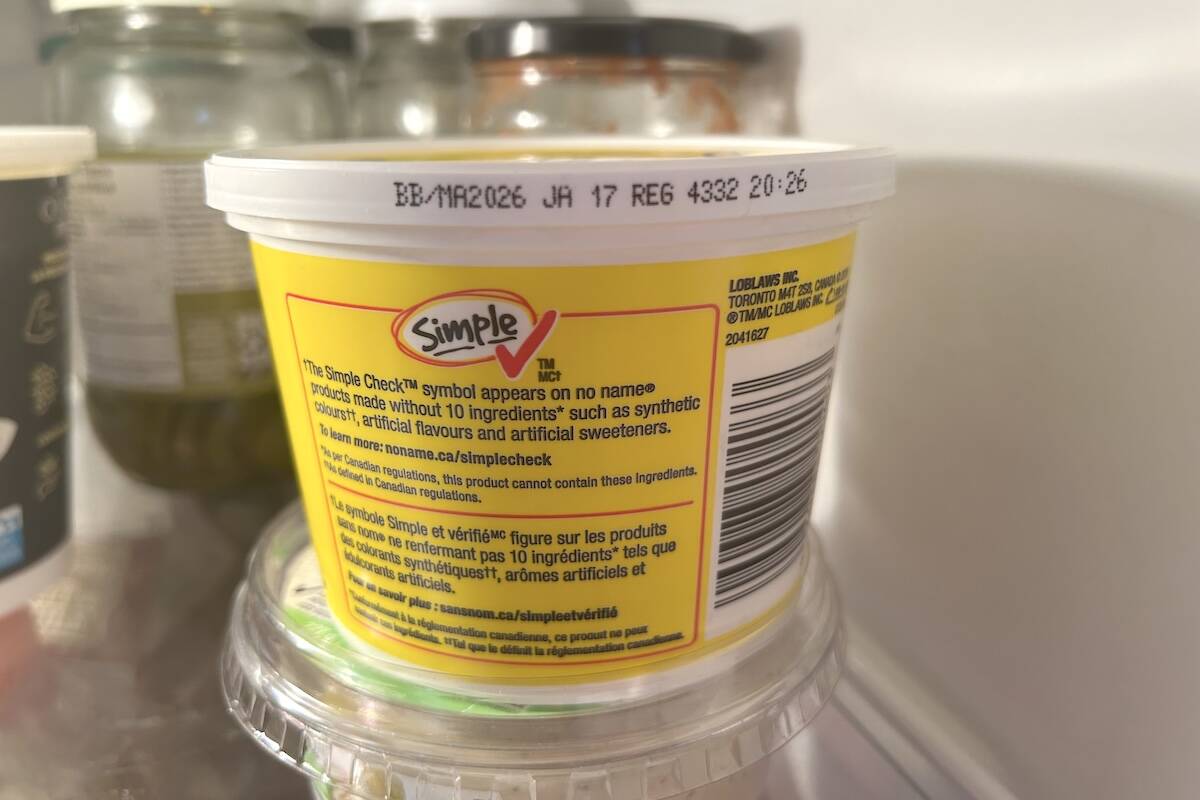
Best before doesn’t mean bad after
Best before dates are not expiry dates, and the confusion often leads to plenty of food waste.
The machine, a Canadian invention originally called DOT, was borrowed from Olds College, which wanted to test it on a farm.
“For me it was wonderful that Wade gave us this opportunity because now I can compare the performance of an autonomous machine and a conventional machine in the same field,” said Roy Maki, research program manager with the college’s Centre for Innovation.
“It doesn’t get any better than that.”
It’s no surprise that the fifth-generation farmer was keen to try out a cutting-edge machine. When not farming, McAllister takes to the skies as a commercial helicopter pilot — fighting forest fires and flying search-and-rescue missions.
There are similarities between flying helicopters and farming, he said.
“The equipment we are running today on the farm is really expensive,” said McAllister. “It costs a lot of money to run a farm these days — helicopters are no different. They cost a lot of money to operate. There’s a lot of record keeping, and maintenance is obviously top quality.”
The seeding with OMNiPOWER, now owned by a division of CNH, only involved 43 acres — but they were the ones that really slow you down.
Modern drills are getting very wide and opening up fields for seeding is time consuming, said McAllister, who farms with his brother Scott.
“Before you start seeding you must do your outside rounds,” he said. “Most guys do two to three rounds around the whole perimeter of their field — then it’s all back and forth from there.
“But if you had a little short drill or narrow drill that could go around all your fields and open everything up, and then you get your big wide drill and all you do is just start going back and forth.”
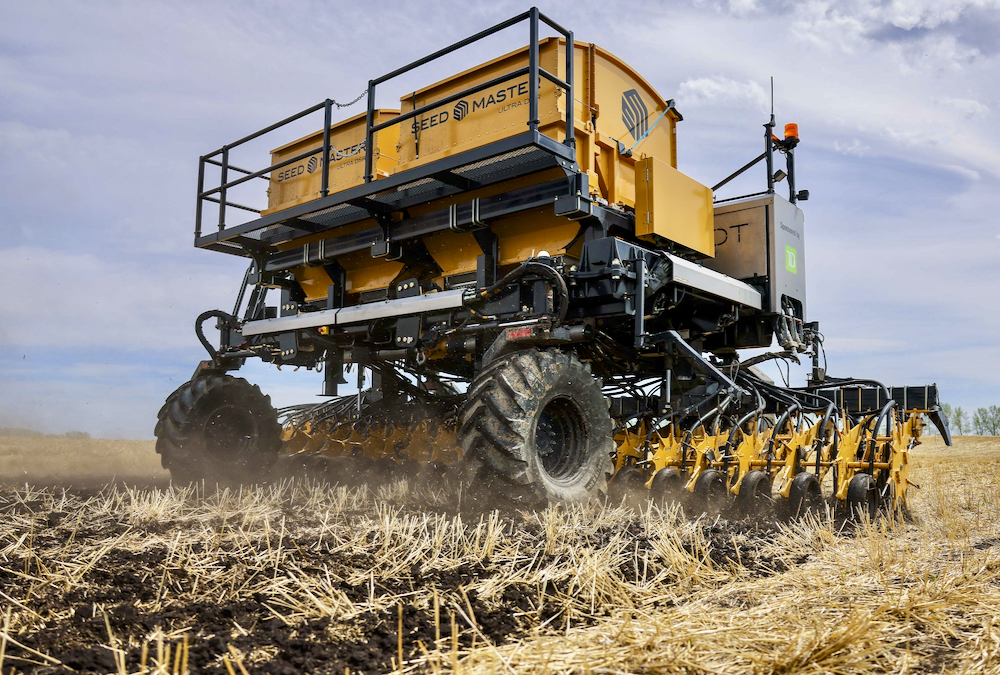
The McAllister farm (which is just 25 minutes from Olds College) is divided into many fragments. The largest field is around 200 acres. Within that area are “efficiency killers” — sloughs, well sites, power poles, and trees. A small seeder that can go around those obstacles with communicating maps would be ideal, he said.
“You would just crush the acres in a day,” he said. “And the nice thing is that it’s in the same field as you when you’re filling, so logistically for filling it, and everything, I mean you’re in the same field as it anyway. And if something were to happen to it, you’re already there. Somebody is there to work on it.”
OMNiPOWER is a self-driving platform on which implements for seeding, fertilizing and spraying can be mounted. (It takes around 15 minutes to switch implements.) The first step in deploying the robot is driving a GPS-equipped truck around the perimeter of a field and around any obstacles or wet spots.
“Once you have completed that, the drill will not go outside of that boundary,” said McAllister. “It will shut down before it goes outside that boundary. And then you put in how many outside rounds you want it to do, and then you pick an A-B line, so back and forth, and you push ‘go’ and it just starts seeding.
“For a drill that is unmanned to go around the whole perimeter of the field and not run into anything was pretty wild to watch.”
The machine has also been used for spraying and fertilizing on other farms, he said, adding the unit has a safety cable, that if touched by a person, animal, fence or other obstacle, will force the unit to stop.
McAllister said he wouldn’t use a robot to seed his entire farm but would consider purchasing a unit for opening up his fields for seeding.
He also lauds Olds College for testing technology that could help shape the future of agriculture, adding the two advantages of ag robots are time savings and reduced labour.
“It’s on everybody’s radar, but like I said too, a lot of farmers, they love being out in the field, so I don’t think it’ll ever be full autonomy,” he said. “But I think it will be autonomous machines working with farmers. Working together, like getting an autonomous sprayer and a conventional sprayer out in the same field.”
Maki said he was impressed with McAllister’s willingness to try the new technology — and isn’t surprised the young farmer is also a commercial helicopter pilot.
“He goes above and beyond,” he said. “We all take a little bit of risk, but I think he takes more than usual. But you must take risks to move on, especially with technology and agriculture. And he does that.”
The rapidly evolving technology is at the point where farmers can order and use a robot, although factory wait times may be long, Maki added.
“There are people using them besides us,” he said
He noted the McAllisters are using 15-inch spacing when seeding canola with their SeedMaster single rank drill. The brothers are learning some interesting things about wide spacing, he said.
“This is very controversial to do, especially with canola over the years,” he said. “Now it’s generally accepted that 15-inch spacing with canola will grow a good crop, and Wade can testify to that.”
Agriculture robots are a huge leap into the future, said Maki, adding field time is critical for developing new farming technology and Olds College can only do so much on its Smart Farm research station.
“When someone like Wade comes along, we can really learn more, run it on a larger scale and get more experience with it,” he said. “We can really move the needle on advancing the technology when we have producer partners like Wade.
“So if I look at my career, this is almost a perfect storm right here that we can work with the Smart Farm, the technology, and the innovators. It’s all the moving pieces you need.”

